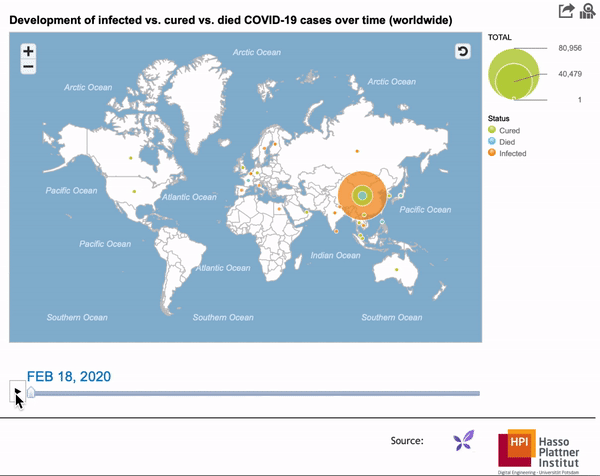By the March 11, 2020, the worldwide spread of COVID-19 (formerly known as 2019-ncov) was referenced as a pandemic situation by WHO. The following animated GIFs visualize the impact of the latest developments. In the following, we compare two selected two-week timeframes in correspondence to the incubation period of COVID-19. For further analyses, please refer to our COVID-19 data analysis tool.
COVID-19 worldwide situation from Feb 01 to Feb 18, 2020:
At the beginning of Feb 2020, we can see a single hotspot in China 🇨🇳. Afterwards, some punctual infections in selected countries around the globe occurred. The world speaks still considers COVID-19 as a Chinese epidemic situation. Starting from about 12k about 3k new infections per day are reported summing up to a total of >73k worldwide infections.
COVID-19 worldwide situation from Feb 18 to Mar 11, 2020:
About two weeks later starting from mid of Feb 2020, we can observe the development of a pandemic situation (sprinkles in almost all countries around the globe). Three main hotspots with a fast increase of new infections developed: Iran 🇮🇷, Italy 🇮🇹, and South Korea 🇰🇷. In the meantime, new infections outside of China. Worldwide infections decline to less than 1k per day for rest of Feb 2020. By the beginning of Mar 2020, daily infections start to grow and exceed more than 4k per day summing up to a total of almost 120k infected persons.



